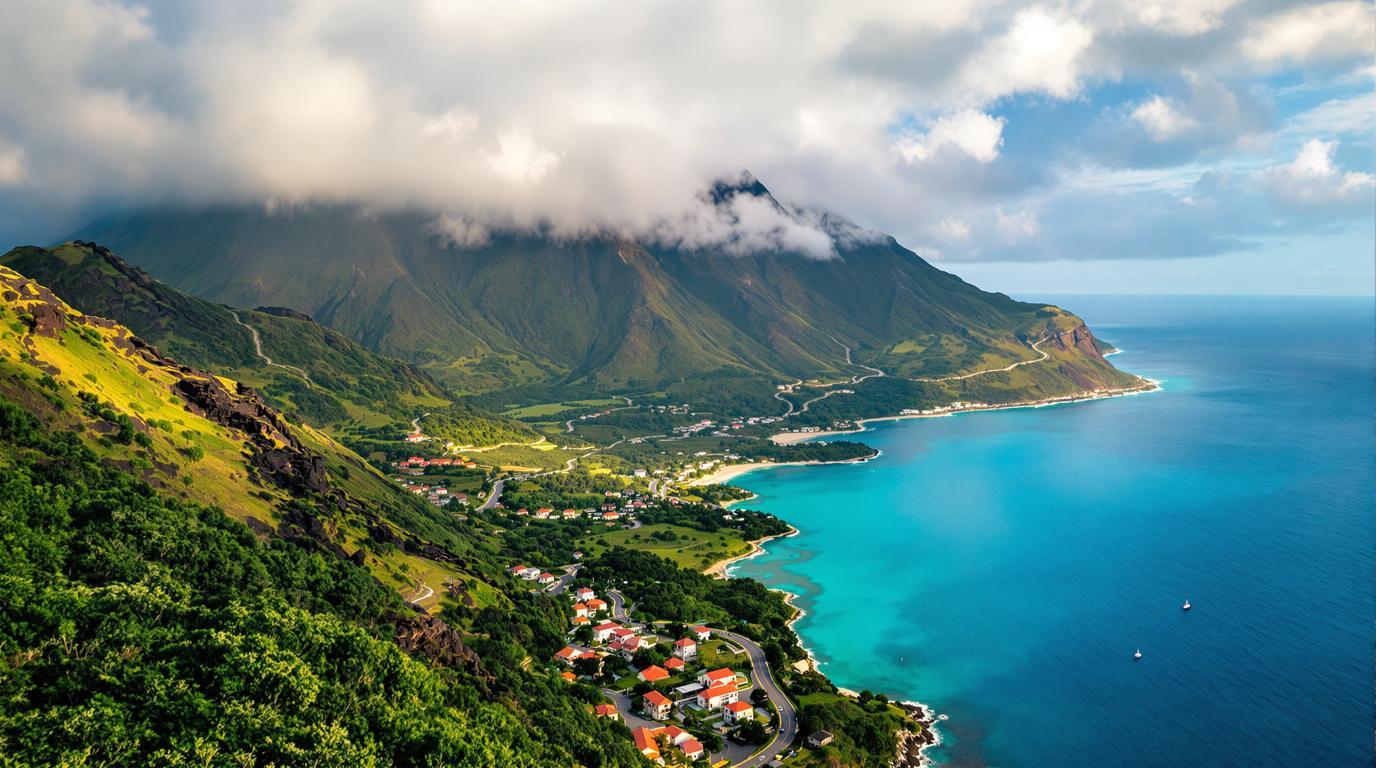I step onto the narrow airstrip of Juancho E. Yrausquin Airport, claimed to be the world’s shortest commercial runway, and immediately feel the shift. The Caribbean sprawls below, but Saba stands defiant against the turquoise stereotype—a volcanic fortress rising dramatically from the sea with nary a beach in sight. This 5-square-mile Dutch municipality has somehow preserved what most Caribbean islands lost decades ago: authenticity untouched by resort chains and cruise ship crowds.
Where volcanic slopes meet Dutch precision in the Caribbean
Saba’s history reads like a unlikely collision of worlds—Dutch colonists who somehow tamed a seemingly unlivable volcanic cone in the 1600s. When locals told me they didn’t have a proper road until 1958, I initially thought they were joking. “The Road,” as it’s simply called, was deemed impossible to build by engineers, only for a stubborn local to design it himself, learning civil engineering by correspondence course.
“We’ve never had sugar plantations or cruise ships to depend on,” explains James Johnson, a seventh-generation Saban whose ancestors’ red-roofed cottage stands proudly in Windwardside village. “So we became resourceful. That’s why Saba feels different—we’ve never had the luxury of forgetting who we are.”
Three experiences you won’t find in guidebooks
The secret route to Mount Scenery’s cloud forest
While most visitors tackle Mount Scenery’s 1,064 steps from Windwardside, I discover the less-traveled Crispeen Trail that rewards the effort with untouched wilderness. As I climb above 2,000 feet, the forest transforms into a mystical realm where moss-draped mahogany trees emerge like apparitions through the mist. The path narrows until I’m pushing through dense vegetation, hands brushing against enormous elephant ear plants, before emerging at the summit alone—a rarity on Caribbean peaks.
Dinner with the tide at Tropics Café
In the garden of Juliana’s Hotel, I discover what might be the Caribbean’s most authentic fusion cuisine. Chef Patrick serves his grandmother’s Dutch-Indonesian-Saban recipes at Tropics Café, where I taste bitter balls with Saban curry dipping sauce as frigatebirds soar overhead. Unlike the tourist-centered restaurants on neighboring islands, Patrick closes when he runs out of fresh ingredients—usually around 8pm—making for an intimate dining experience where conversation flows between tables.
A culinary tradition born of isolation
At Brigadoon Restaurant in Windwardside, I watch chef-owner Tjeerd carefully prepare Saban lobster with cinnamon-laced butter and foraged sea grapes. Unlike other Caribbean islands where imported foods dominate resort menus, Saba’s isolation fostered culinary self-reliance. The island’s signature dish—Saba Spice liqueur—captures this adaptive spirit, originally created by sailors as a medicinal tonic using local ingredients like cinnamon, cloves, and nutmeg steeped in rum.
“Every family has their secret recipe,” Tjeerd tells me as he pours a small sample. “Mine has twenty-three ingredients. My grandmother would have my head if I shared them all.”
Planning your own escape to the unspoiled queen
Getting there and around
The journey to Saba is itself a filter that keeps crowds away. Reach the island via Winair’s 12-minute flight from St. Maarten (an adventure with the airport’s impossibly short runway) or the Edge ferry (weather permitting). Once on island, arrange a taxi from the port or airport in advance—there are only five on the entire island.
When to visit
Avoid hurricane season (June-November) and aim for January-April for the clearest diving conditions at the protected marine park. For cultural immersion, time your visit to coincide with Saba Day celebrations (first Friday in December) when the island erupts in national pride and locally-distilled Saban Spice flows freely.
The value of places that resist change
As I leave Saba, watching its perfect volcanic cone recede into the distance, I’m struck by what makes it extraordinary—not what it offers, but what it steadfastly refuses to become. In an era where destinations increasingly mirror each other, Saba’s stubborn authenticity feels like stumbling upon an endangered species—something to be witnessed now, before the rest of the world inevitably discovers it.
